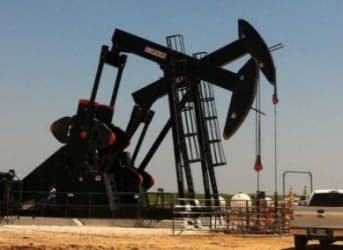Even as the price of oil remains stubbornly low, the IEA is starting to become incrementally more positive about oil’s supply and demand balance in the medium term. The agency sees lower oil prices forcing non-OPEC producers, including U.S. shale firms, to cut output by a historically large level over the next 12-15 months.
The IEA sees tightening supply as oil prices are insufficiently high to justify continued exploration and drilling. For 2016, the agency is expecting global production to drop by 400,000 barrels despite the IEA’s expectation of demand growth of roughly 1.8 percent in 2015 and 1.4 percent growth in 2016.
The IEA’s forecast is interesting in that, if it proves correct, it would represent a complete reversal from the recent production growth figures. While growth peaked in 2014, expanding by 1.8 million barrels per day (mb/d), the IEA sees U.S. growth falling by almost 200,000 bpd in 2016. The IEA’s report is bullish for the market overall, but it’s unclear which companies are going to be the first to blink and cut production. Thus far, most of the major shale producers are still going out of their way to announce production growth. That’s consistent with the IEA’s 2015 forecast, but if 2016 is going to end up being a down year for production, cuts are going to have to start to materialize soon. Related: Does OPEC Have An Ace Up Its Sleeve?
Take Pioneer Natural Resources for instance. The firm said back in August that it still expects 10 percent plus production growth in 2015. This growth is powered by increases from the Spraberry/Wolfcamp production areas but offset by lower growth in Eagle Ford shale. PXD announced at the time that it had put two additional rigs to work in Spraberry/Wolfcamp and it would add two more rigs each month going forward to bring 100 new wells online by the end of the year.
Granted, the story of fracking has been one of breakneck growth all along and shale wells do deplete quickly. Nonetheless, Pioneer’s comments are hardly consistent with a company that is concerned about the current price environment and looking to cut back. Instead the company appears to be racing ahead on new production presumably hoping that eventually the market will turn. Related: Oil Prices Could Surge As This Country Fails To Meet Production Targets
Devon Energy offers a similar story to Pioneer. The firm announced in August that despite the lower price of oil leading to a 25 percent fall in revenue, production growth for Q2 was actually up a whopping 32 percent year over year, with U.S. production at a record high of 172,000 bpd. Bear in mind of course that the EIA says production in the U.S. peaked in April and has actually been falling since then. The company also upped its projections on capital spending by 10 percent to $4.4 billion to $4.8 billion versus its previous estimate in February.
Again, this is inconsistent with the notion of shale firms preparing to run for the hills and cut production on 2016. Perhaps executives at DVN and PXD are bluffing or simply spinning the numbers for PR purposes and production cuts really will materialize, but that outcome is far from certain at this point. Related: This Is What Needs To Happen For Oil Prices To Stabilize
Instead, if production in the U.S. really is going to fall, it may come from firms like Whiting Petroleum and Continental Resources. Whiting announced at the end of July that it was cutting its capital spending budget and that it would run 8 drilling rigs for the year instead of the previous 11 it had planned to run. WLL’s production in July was up 2 percent quarter over quarter, and production growth next year stands a good chance of turning negative for the firm. Whiting’s per barrel costs look like they may be a bit under $20 each excluding production taxes and Depreciation, Depletion and Amortization (DD&A). As a result, while extant production is profitable, new production may not be worthwhile.
Continental is taking similar steps and announced earlier in September that is was cutting its capital spending to align with its cash flow. Fiscally that is certainly a sound move, but if many firms follow CLR’s footsteps, then it could set the stage for the long awaited turn in production growth. And that would be good news for oil prices indeed.
By Michael McDonald of Oilprice.com
ADVERTISEMENT
More Top Reads From Oilprice.com:
- $50 Oil For 15 Years – Can Anyone Take Goldman Seriously Anymore?
- China Keeps Oil Prices From Falling As It Fills Its Strategic Reserves
- They're Giving Away Cash To Help Copper Miners Here


















